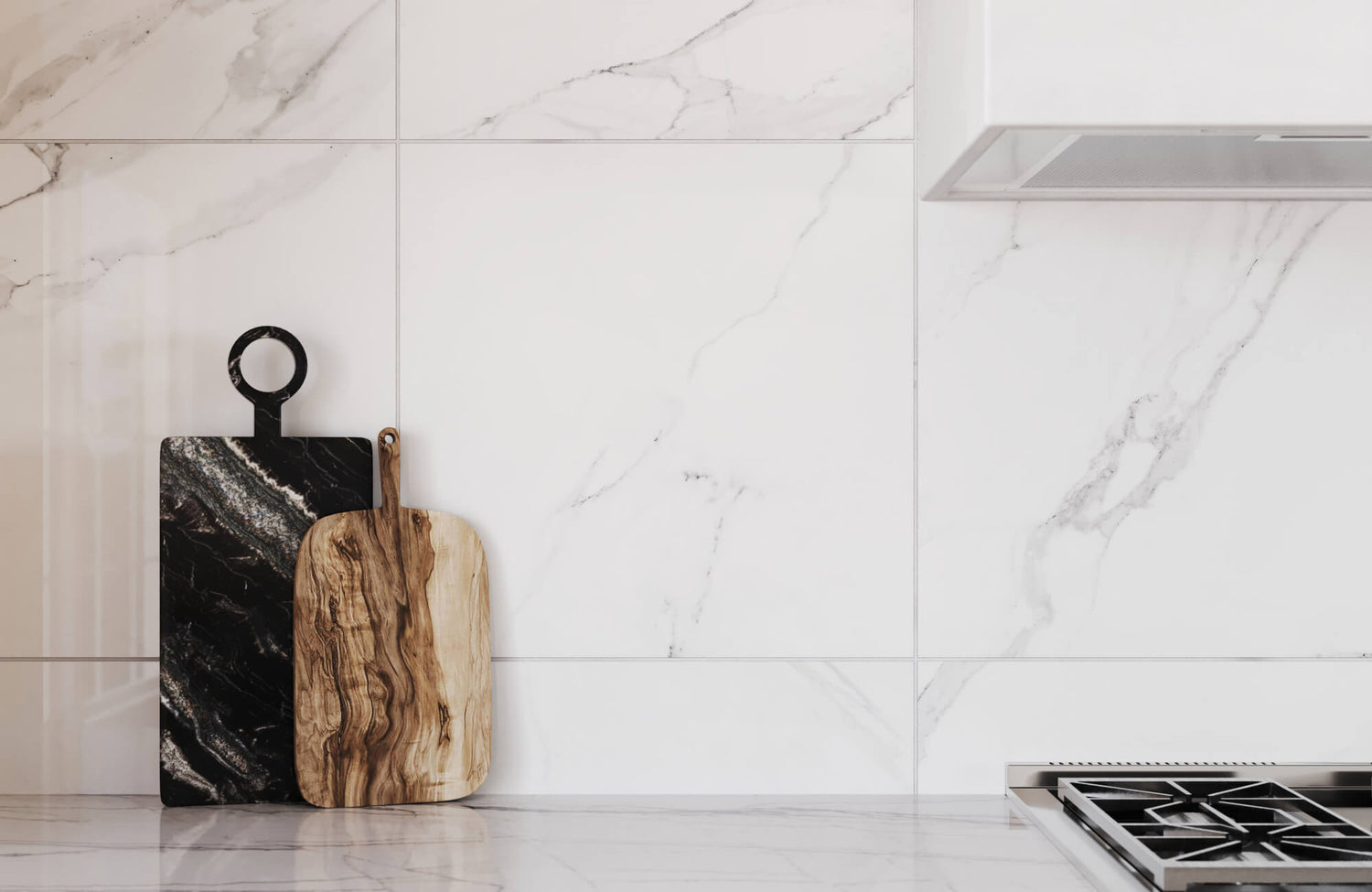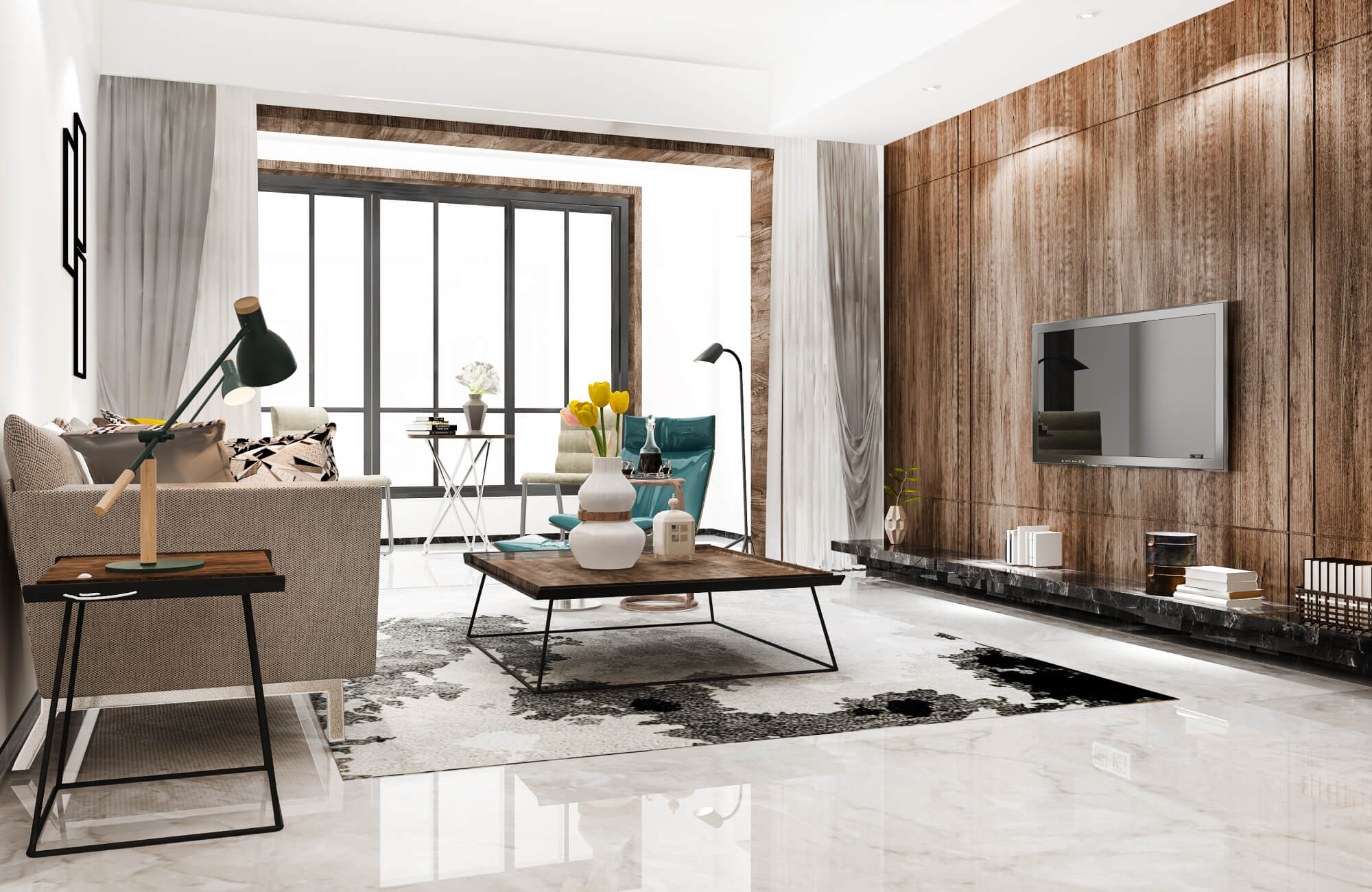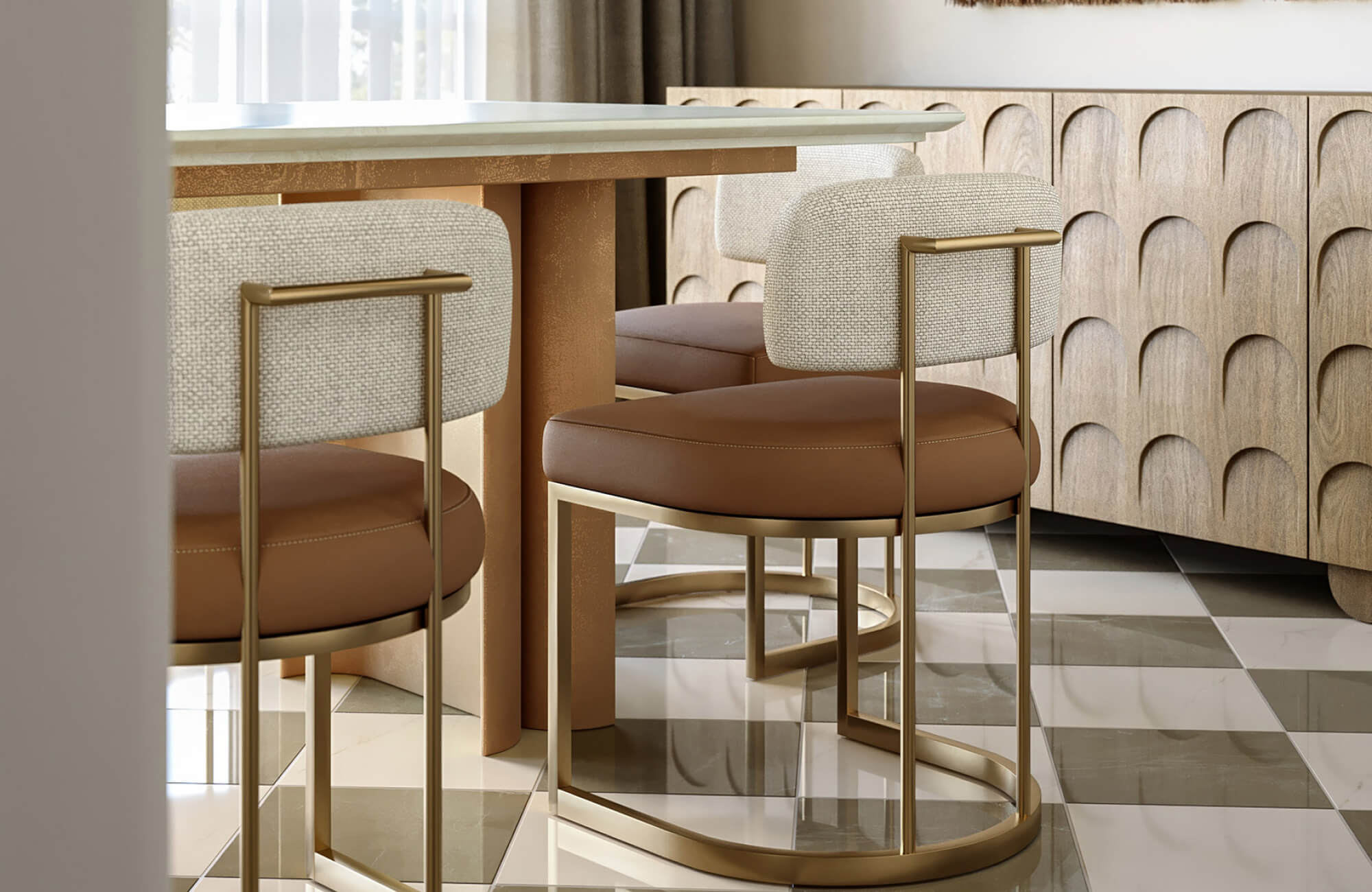Marble effect tiles have become a popular choice in interior design, admired for their ability to replicate the timeless elegance of natural marble while offering practical benefits. Crafted from durable materials such as porcelain or ceramic, these tiles resist scratches, stains, and moisture, making them ideal for areas where both aesthetics and functionality are crucial. Their combination of beauty and resilience also makes them a versatile option for various spaces, from kitchens and bathrooms to living areas and entryways.
In this article, we’ll explore the key advantages of marble effect tiles, from their low maintenance and affordability to their wide range of colors, patterns, and finishes.
Composition of Marble Effect Tile
Marble effect tiles are primarily made from two key materials: porcelain and ceramic. While both share similarities in appearance and function, they each have distinct characteristics that determine their suitability for different applications.
Porcelain, known for its density and durability, is often the preferred choice for areas that experience frequent activity, such as kitchens, bathrooms, and entryways. Its superior strength and resistance to wear make it ideal for spaces that need long-lasting performance. On top of that, porcelain marble effect tiles tend to have a more uniform color and texture, closely resembling the polished surface of natural marble.
Ceramic, on the other hand, offers a broader range of colors, patterns, and finishes, making it a versatile option for design flexibility. It is generally thinner and more lightweight than porcelain, which allows for easier handling and installation. Ceramic marble effect tiles also come in various glazes and surface treatments, further expanding aesthetic possibilities. However, due to their higher susceptibility to chipping, they are best suited for wall applications rather than flooring, where durability is a key consideration.

Manufacturing Process
The creation of marble effect tiles is a meticulous process that involves several stages, each contributing to the final product's distinctive appearance and durability.
1. Raw Material Preparation
The process begins with the preparation of raw materials, primarily clay, which is combined with water and other additives such as binders and colorants to form a paste. The composition of this paste varies depending on the desired strength, porosity, and color of the final tile. Careful selection of raw materials ensures consistency in texture and minimizes imperfections in the final product.
2. Molding and Pressing
Once the paste is prepared, it is carefully pressed into molds to shape the tiles into the desired size and thickness. These molds, often made from plaster or other durable materials, can be reused multiple times. The pressing process compacts the paste and removes any excess air, ensuring a uniform density and structure. This step is crucial for maintaining the tile's durability and preventing weak spots that could lead to cracks or breakage.
3. Drying and Initial Firing
After pressing, the tiles are allowed to dry, reducing their moisture content in preparation for firing. Once sufficiently dry, they are placed in a kiln and subjected to high temperatures. This process fuses the particles together, forming a strong and durable structure while also developing the tile’s base color and texture. Proper drying prevents warping or uneven surfaces, which can affect the final installation.
4. Glazing for Marble Effect
To achieve the distinctive marble appearance, a layer of glaze is applied to the tile surface after the initial firing. This glaze contains pigments that replicate the natural veining and color variations of marble. These pigments are carefully blended to create a variety of realistic patterns and shades. Advanced digital printing technology is often used in this step to enhance the authenticity of the marble design.
5. Final Firing and Finishing
After glazing, the tiles undergo a second firing in the kiln. This step fuses the glaze with the tile body, creating a smooth, glossy finish. The high temperatures intensify the colors and patterns within the glaze, ensuring a marble effect that closely resembles natural stone while maintaining the durability and low-maintenance benefits of porcelain or ceramic. The final cooling phase is carefully controlled to prevent stress fractures and ensure a long-lasting product.

Advantages of Marble Effect Tiles
As previously highlighted, marble effect tiles offer an appealing mix of beauty, durability, and affordability, making them a popular choice for interior design projects. Their many benefits make them a versatile and practical option for both residential and commercial spaces.
Durability and Longevity
Ceramic and porcelain marble effect tiles are known for their impressive durability and long lifespan. Their scratch-resistant surface helps maintain a flawless appearance for years. These tiles also resist stains, making them easy to clean and maintain. For example, common household substances like wine, coffee, and oil won’t leave lasting marks. On top of that, their moisture-resistant properties prevent water damage and mold growth, making them an excellent choice for wet areas like bathrooms and showers.
Low Maintenance
One of the biggest advantages of marble effect tiles is their low maintenance requirements. Unlike natural marble, which requires regular sealing and polishing, these tiles need minimal upkeep. A simple wipe-down with a mild detergent and warm water is enough to keep them looking clean, saving both time and effort. With their hassle-free care routine, they are a great choice for busy households and commercial spaces alike.
Affordability
Marble effect tiles provide a budget-friendly alternative to natural marble, making them accessible to a wider range of homeowners. Despite being more affordable, they closely mimic the look of genuine marble, delivering a high-end aesthetic without the hefty cost. This makes them a smart option for those looking to achieve a luxurious feel without exceeding their budget.
Versatility and Design Flexibility
Available in a wide range of colors, patterns, and finishes, marble effect tiles offer plenty of customization options. They can replicate various marble types, such as Carrara white, Calacatta gold, and Nero Marquina, such as our Leona 24x24 Matte Porcelain Tile in Nero Marquina as seen above, giving homeowners and designers endless creative possibilities. Whether your style leans toward classic elegance or a more modern look, these tiles bring a refined touch to any space. To see how they would fit into your home and explore different styles, try our augmented reality (AR) tool, and consider ordering tile samples for a closer look at their design and texture.
Additional Benefits
Apart from durability, affordability, and versatility, marble effect tiles come with added benefits. They are hypoallergenic, making them a great choice for those with allergies or sensitivities. They are also fire-resistant, offering extra peace of mind for homes and businesses. On top of that, many manufacturers use sustainable materials and eco-friendly production processes, helping to reduce environmental impact.

Considerations for Installation
When installing marble effect tiles, several factors must be considered to ensure a successful outcome and lasting beauty. Proper preparation, material selection, and expert handling all play a crucial role in achieving a flawless and durable finish.
Surface Preparation
A well-prepared surface is key to a smooth and secure tile installation. The area must be clean, level, and free from defects or debris that could affect adhesion. Any existing flooring or wall coverings should also be removed, and the surface may need to be primed or treated to enhance grip. Skipping this step can lead to uneven tiles, grout cracking, or even tile delamination, compromising the overall result.
Adhesive Selection
Choosing the right adhesive is just as important as selecting the tile itself. The adhesive must be compatible with both the tile material and the surface it will be applied to. Different types of tiles and substrates require specific adhesives to ensure a strong, long-lasting bond. For the best results, consulting with a professional installer or tile supplier can help you determine the most suitable option for your project.
Grout Selection and Application
Grout does more than just fill the gaps between tiles—it also contributes to the overall design and durability of the installation. The right grout color should complement the tile’s look while enhancing the intended design scheme. It’s also essential to choose a grout that resists moisture and stains, ensuring it maintains its appearance over time. With options like sanded and unsanded grout, each offering unique benefits, speaking with a tile expert can help you find the best fit for your space.
Professional Installation
While some homeowners may attempt a DIY approach, hiring a professional tile installer is highly recommended. Their expertise ensures accurate measurements, proper alignment, and secure adhesion to the surface, resulting in a polished and long-lasting finish. Professionals also have access to specialized tools and techniques that can streamline the process and improve overall quality, making their expertise invaluable for achieving the best results.
The Timeless Appeal of Marble Effect Tiles
Marble effect tiles offer a perfect balance of elegance and practicality, making them a versatile choice for any interior. Their ability to replicate the beauty of natural marble while providing durability and easy maintenance has made them a go-to option for both classic and modern spaces. Whether used for floors, walls, or statement accents, they bring a sophisticated look without the high upkeep of real marble.
With a wide selection of colors, patterns, and finishes, marble effect tiles allow for endless design possibilities. Understanding their composition, benefits, and installation considerations will also help you choose the best option for your space. If you need expert guidance or want to explore available styles, contact us today. We’re here to help!








